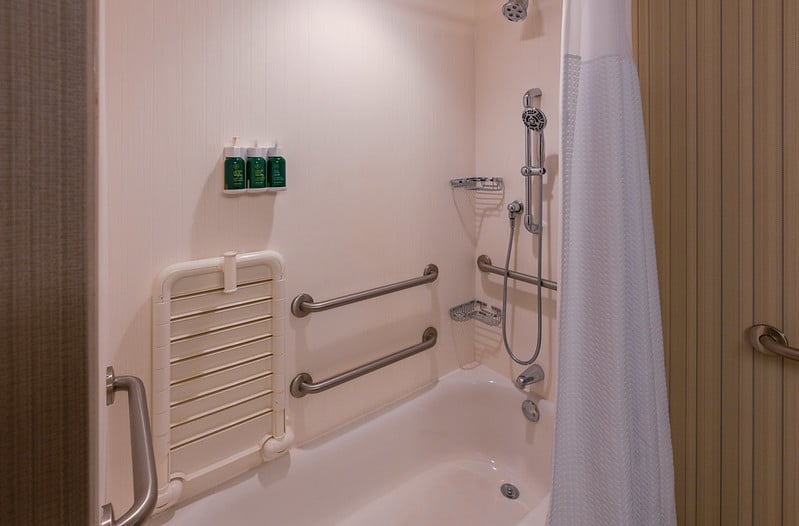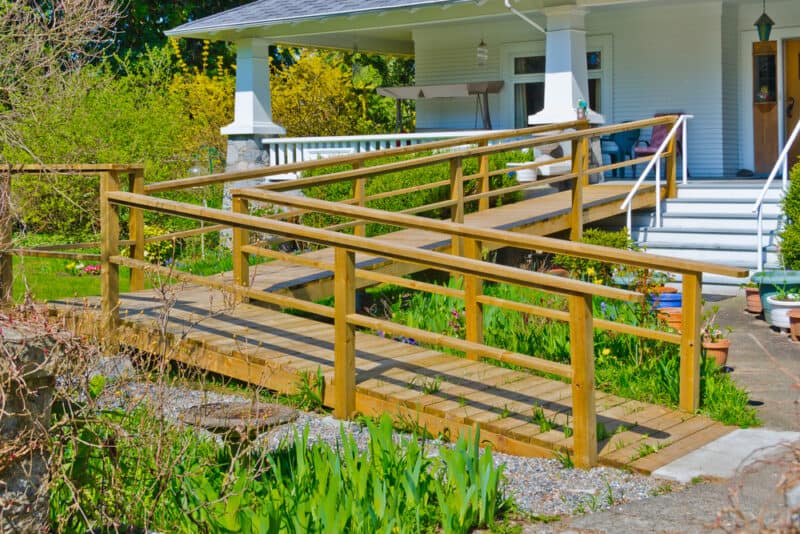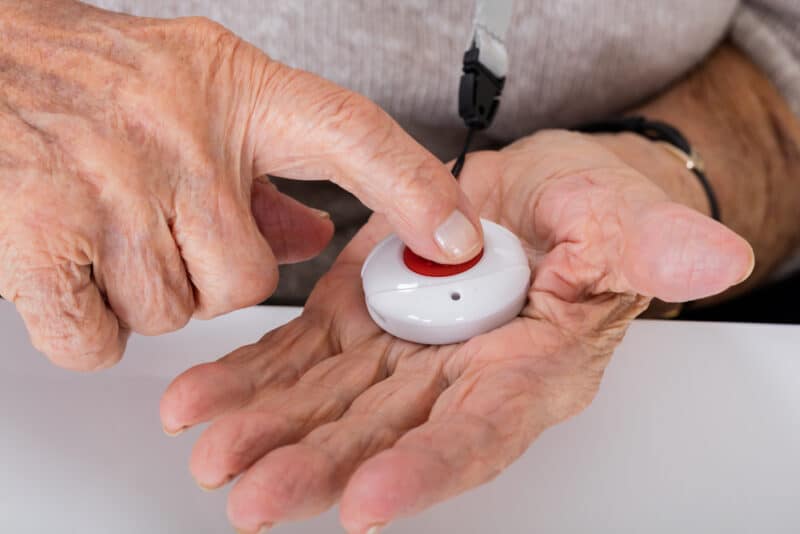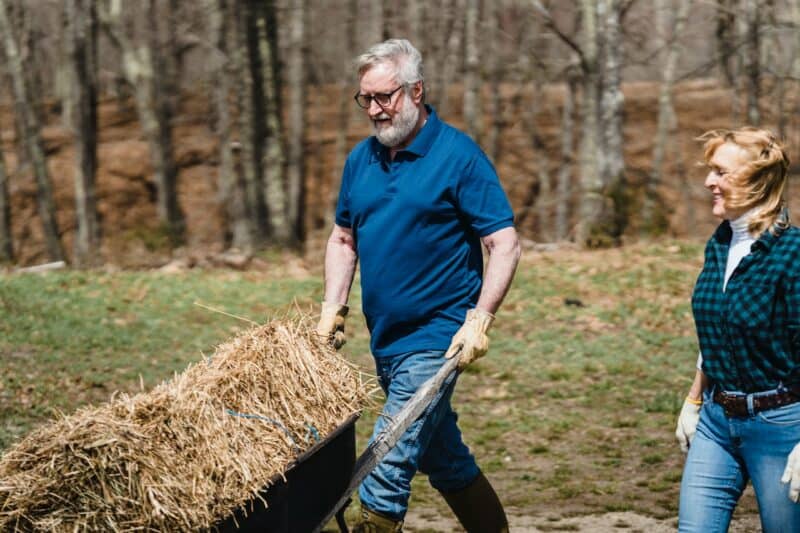Aging is a reality that almost all of us will have to deal with at some point. While we may be strong and independent now, our bodies—and their changing needs—will need more care and help as time goes by.
This is generally easy to sort out when you live in the city, but rural areas can be more challenging. Whether we’re making plans for ourselves or our elder family members, it’s important to know how to navigate aging in place when you’re outside city limits.
What Does “Aging in Place” Mean?
This phrase refers to staying in one’s home as one advances in years rather than moving in with children or into elder care residences. Most of us want to be in the comfort of our homes as long as possible rather than giving up independence and sovereignty.
That said, almost everyone needs more help and support as they age, and living environments need to accommodate these changing needs. As such, if you plan on aging in place, it’s essential to take your potential future needs into consideration and take action now accordingly.
Below are some of the most common issues that will need to be addressed if you want to keep on living in your rural home for as long as you can.
Home Modifications for Accessibility and Safety
The whole point of aging in place is to stay in our own houses for as long as possible. As such, we may need to make adjustments to our homes’ interiors to make them safer and more accessible.
1. Put in Grab Bars and Handrails

Since joints weaken and balance diminishes with age, grab bars and handrails in places where we may need extra help is a good idea.
For example, a grab bar installed beside a toilet can offer extra “oomph” for sitting and standing. Similarly, handrails in the bathtub and shower area can help during dizzy spells or moments of weakness.
Consider installing handrails and grab bars in corridors and doorways where there are small sets of steps. Those one or two steps up and down may not be an issue now but might give you a fair bit of grief 30 or 40 years later.
This really is the key to preparing for aging in place: considering what you might need when you aren’t as able-bodied as you are at this moment.
If you have multiple floors in the house, double-check all the banisters to ensure they’re sturdy and unlikely to come off the walls if someone leans on them heavily.
2. Install Slip-Resistant Flooring

The hardwood and marble floors we love are beautiful to look at and easy to clean, but aren’t necessarily ideal when it comes to aging in place. More than one person has broken a hip or fractured an elbow from slipping and falling on slippery surfaces.
Many different non-slip flooring options are available now in a wide range of aesthetic styles. Depending on your budget, you can consider having your current floors covered in a textured, non-slip vinyl coating, or you can replace the surfaces entirely.
You can also purchase rugs or rolls to place in hazardous areas like bathrooms or kitchens.
You can also consider cork flooring if you don’t have large pets. It’s about as slip-resistant as you can get, as well as insulating, and has the added benefit of being spongy. This means that you’ll be less likely to break bones if and when you fall on it.
3. Consider Installing Ramps

If you think that you may need to use a wheelchair or other mobility aid at some point in the future, consider having ramps installed. It’s much easier and more convenient to have these sorted out ahead of time than to be stuck waiting when and if you really need one.
4. Determine Whether You’ll Need to Widen Doorways

Again, if you think that you or other family members may need wheelchair accessibility, be sure to measure your doorways.
This will help to determine whether they’ll allow wheelchair thoroughfare or if they’ll need to be widened. Many of us live in century-old farmhouses with significantly narrower doorways than modern buildings.
5. Think About Rearranging Living Quarters
In the past, it was not uncommon for elder family members to move their bedrooms to the main floor once navigating stairwells became a bit treacherous.
If you have the option to do this, it may save you a lot of grief (and arthritis flare-ups) in the future. Use second-floor bedrooms for younger, live-in family members to sleep in and for storage or pastimes you only do occasionally.
6. Consider Installing Some Smart Home Options

This may not be a desirable option for everyone, especially those who prefer to live as naturally and off-grid as possible, but it’s one to consider.
Smart security and emergency alert systems can help keep you safe, as well as send out distress calls to ambulance or police crews if needed.
Electronic medication dispensers can help people avoid accidental overdoses, and smart stoves or ovens can turn themselves off after periods of inactivity to avoid fire risks.
Community Support Options
When it comes to aging in place in rural areas, community support can be one’s greatest asset. Take some time to look into all the options available to you.
7. Determine Potential Transportation Needs

You may be autonomous and independent now, but that doesn’t mean you’ll always be able to drive yourself around to run errands or attend healthcare appointments.
Research to find out what the public transportation options are like in your area. Even rural country roads often have buses that come through a few times a week.
Alternatively, look into rideshares, or if people in the area volunteer to help seniors out with such outings.
Many young people need to do volunteer work as part of their required credits to graduate, so this is a great option to get your errands run while also connecting with younger folks in your area.
8. Set Up Deliveries

Reduce your need to travel outside the home as much as possible by arranging deliveries from places where you normally shop. For example, instead of driving to farmer’s markets in the area, look into farm subscription CSA boxes that’ll be delivered to your door instead.
This has the added bonus of having people check up on you regularly. If the farmers who deliver the boxes either don’t see you or notice that your last box wasn’t touched, they can contact emergency services for a wellness check on your behalf.
9. Organize Extra Help for Your Home or Homestead

It’s difficult to face the reality of diminishing capability as we age, but the fact of the matter is that most of us will not be as capable at age 75 or 80 as we are at 35 or 40.
I’m in my late 40s now, and even though I’m still in great shape, I spend a couple of evenings on hot dates with a heating pad and some Advil after chopping firewood for more than an hour.
We’ll inevitably all need to get some extra help around the property as we get older. This may involve setting money aside to have aged firewood delivered instead of cutting it ourselves, or paying some local lads to plow the driveway during the winter.
The same goes for planting, harvesting, and animal care. There’s no shame in admitting when help is needed, and the priority is getting the work done rather than clinging to a misplaced sense of pride.
If you end up injuring yourself badly, you’ll be able to do even less on your own, so make smart choices here for aging in place.
10. Sort Out Guardianship or Care for Dependent Family Members
The thing about aging is that everyone around us ages as well. We know that our spouses and partners will inevitably have diminished capability as we age, just as we do, but what about our parents and children?
Some people’s parents live a long time and must be cared for by their aging children or grandchildren. In other cases, special needs children grow up into special needs adults, and may need care their parents can no longer tend to.
If you have dependent family members, it’s essential to have plans established for how they’ll be cared for in the event of your sudden passing or if you’re no longer capable of caring for them.
It’s awful to think about, but if any of us have to contend with issues such as Alzheimer’s, dementia, or the aftermath of strokes, we will not have the capacity to make decisions and plans for our loved ones.
Talk to your relatives to see what options you have regarding kinship care. If that isn’t an option, you’ll need to look into group homes or care facilities.
Ensure that you have the financial support in place for these, whether from your own savings or via disability benefits that would be available when needed.

You may need to consult a lawyer to appoint a guardian ad litem to represent or advocate for your family member(s) on your behalf to ensure their care and wellbeing.
Have Emergency Protocols For Aging in Place
We’ve all heard awful stories about people who have gotten injured and lain on the floor for days before anyone came to check on them. Or worse, those who died suddenly were only discovered when mail piled up.
For those of us who don’t have children or close friends whom we communicate with daily, this is an unpleasant but very real possibility that needs to be considered when determining the best strategy for aging in place.
11. Establish Check-Ins with Other People

If you have friendly neighbors, care providers, or clergy in the area, consider arranging regular wellness checks. For example, you may check in with them every couple of days to let them know that everything’s okay, and if they don’t hear from you after 48-72 hours, they have permission to swing by to check on you.
Consider giving at least one of these people a spare key to your home, or let them know where you have said spare hidden on your property. This can come in handy so they don’t have to break your door down in case of an emergency.
Additionally, make sure at least three people have all the contact info necessary to notify your next of kin, primary healthcare provider, and lawyer (if applicable) in case you cannot do so.
12. Make Sure Animal Care Needs are Documented
Whether you have a homestead full of livestock or a house full of pets, ensure you also have protocols for their care. This is especially important if any of your animals have special needs, as you’ll need to be their voice since they can’t communicate to potential caregivers.
Keep a binder full of information and care guidelines in an easy-to-find location. Then be sure to tell at least three people where this binder is so they don’t have to search for it.
An ideal place is on your kitchen counter or top of the fridge, with “ANIMAL CARE” written in large letters on the spine. Keep an info card about your animals in your wallet, with instructions for finding this binder.

Some people also put stickers on their doors or windows saying: “in case of emergency, I have X number of animals to take care of,” or similar.
If possible, establish protocols for who will take care of which animals if you’re incapacitated or pass on unexpectedly, much like we mentioned earlier r.e. guardianship of dependent family members.
When and if you’re in dire circumstances, knowing that the animal companions you love will be taken care of can be immensely comforting.
Aging in place in rural locations may seem like a worrisome topic to navigate, but it doesn’t have to be. You can start making all kinds of small changes ahead of time to make things easier as you get older, and establish relationships with local people so you can help each other out.
Aim to stay as strong and healthy as possible (for as long as possible), don’t take unnecessary risks, and you should be able to thrive in your country home well into your golden years.












